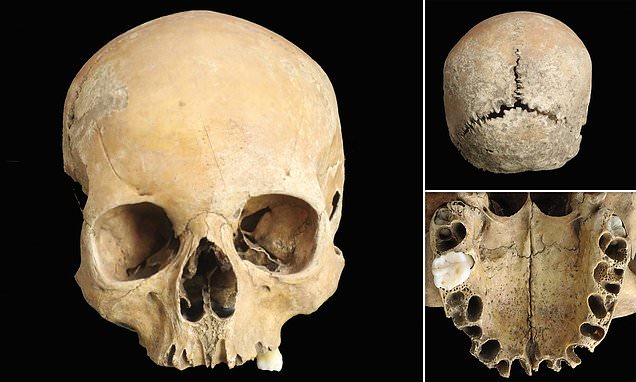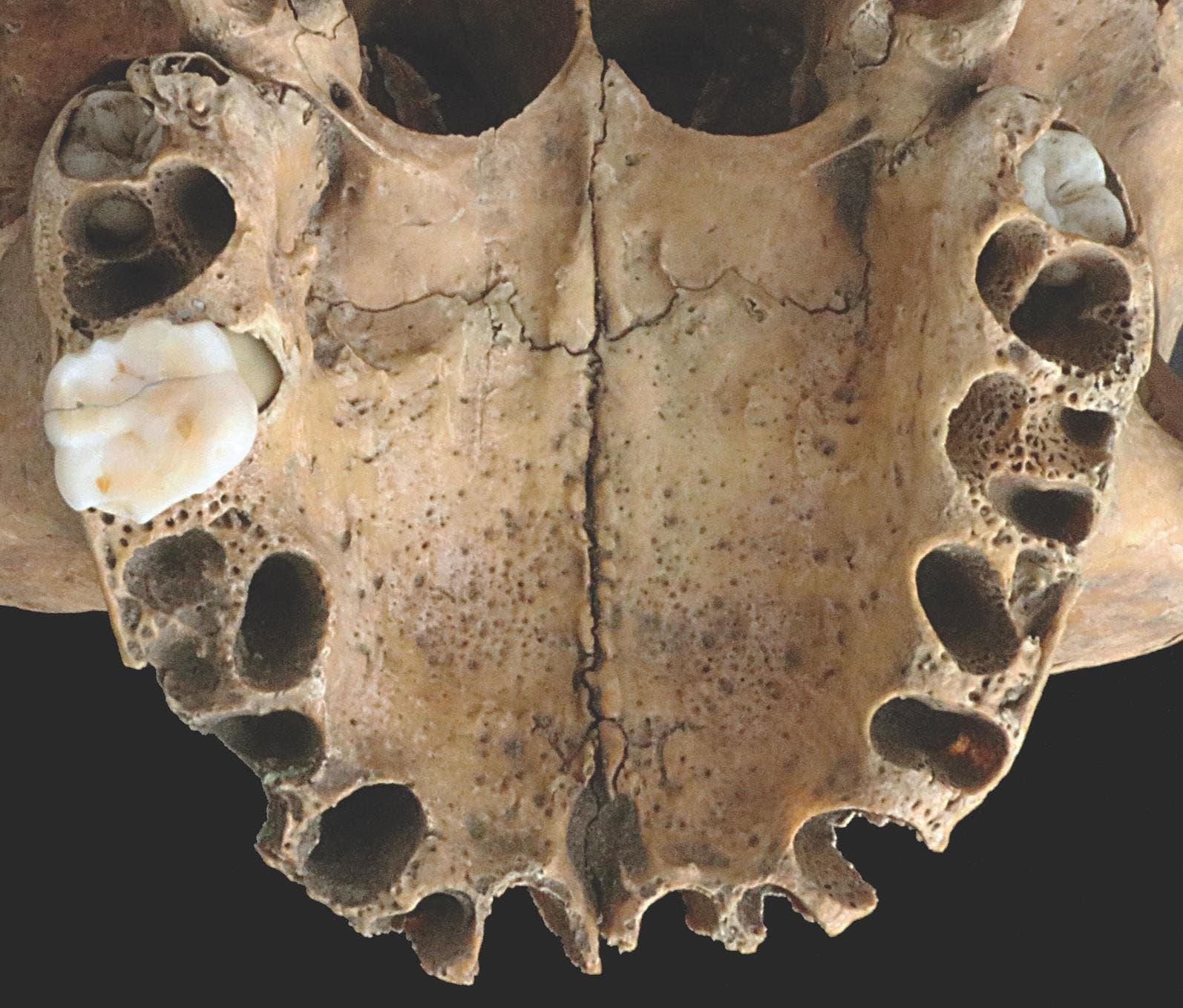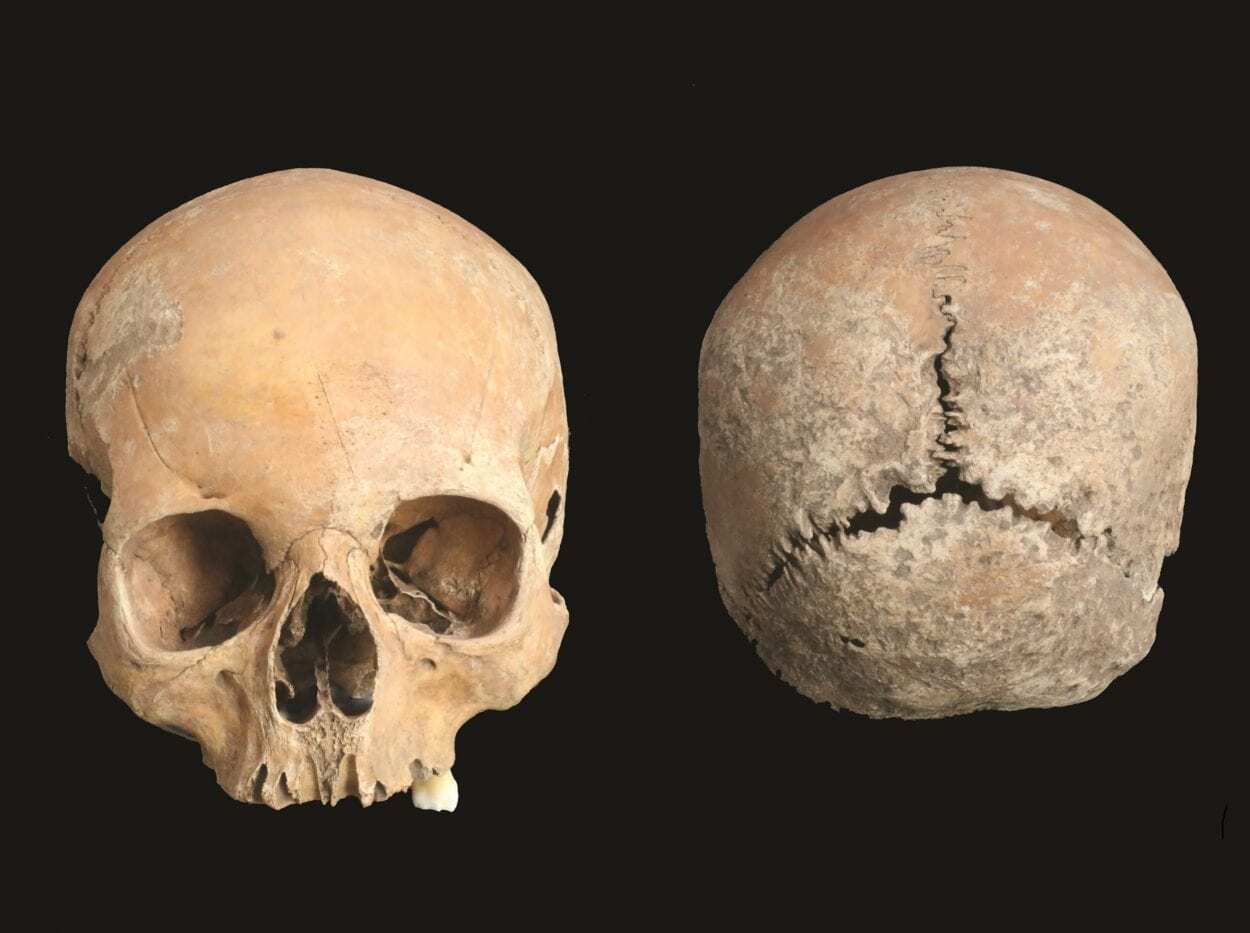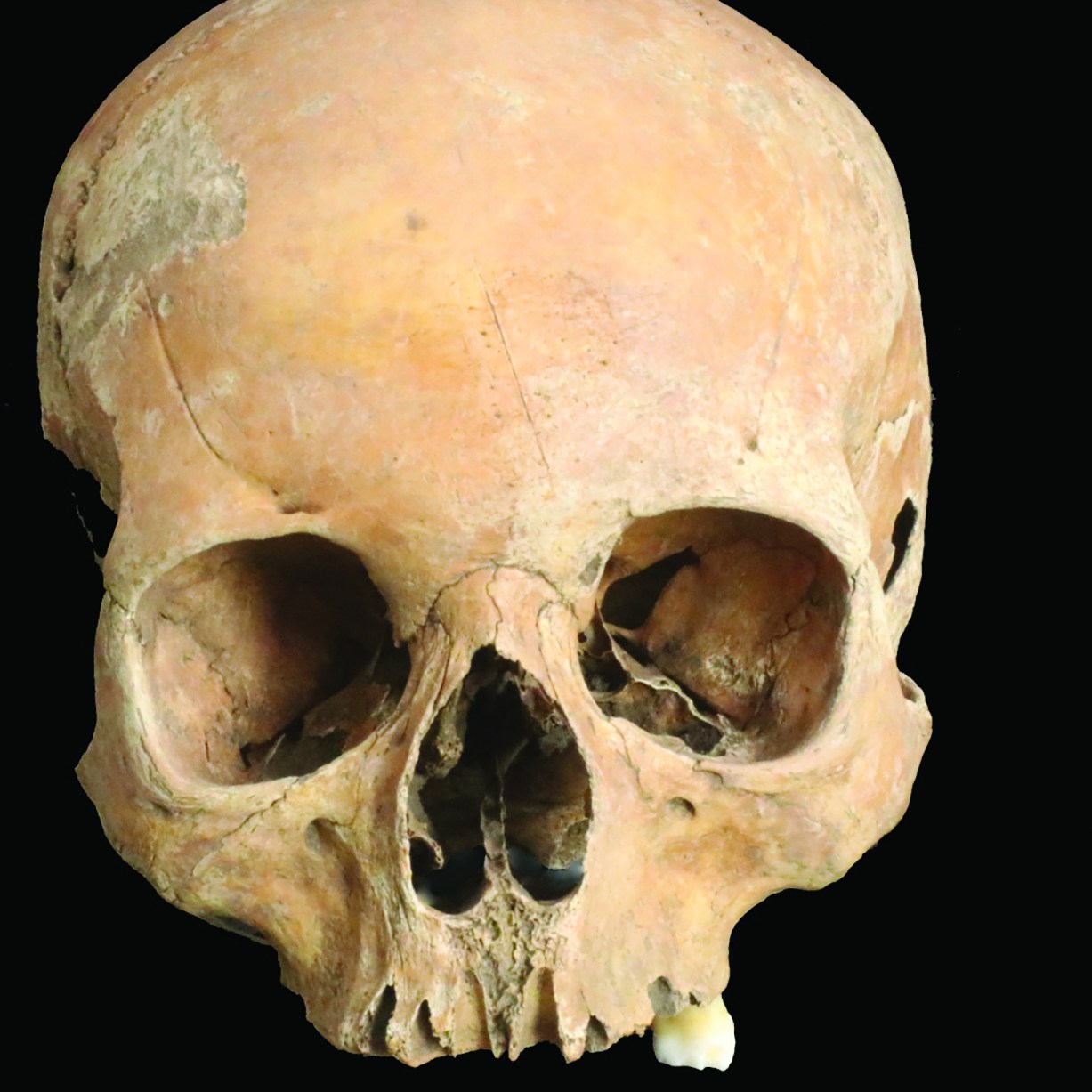A Shocking Archaeological Revelation
In a groundbreaking archaeological discovery, researchers have uncovered the earliest known physical evidence of facial mutilation as punishment in Anglo-Saxon England. The unearthing of a young woman’s skull, dated between 776 and 899 AD, has revealed a harrowing story of brutality and social ostracization from centuries ago.

The remains were found near the Oakridge archaeological site in Hampshire, England. Analysis of the skull showed that this woman, who was only 15-18 years old at the time of her death, had suffered severe facial disfigurement and possible scalping before she passed away. Notably, the lack of any healing on her wounds suggests she died shortly after the gruesome punishment, likely due to blood loss or infection.
While written records of such punishments don’t appear until the 10th century, this discovery pushes the timeline back by at least 100 years. The woman’s injuries align with documented punishments historically meted out to female thieving slaves and adulteresses, leading researchers to theorize that she may have been accused of a crime “greater than theft.”
The Harrowing Story Behind the Remains
According to Dr. Garrard Cole, the lead researcher from University College London, the isolated burial location and the woman’s non-local origins (determined through isotope analysis) support the hypothesis that she was tried for a crime and subsequently became a social outcast.

“This grim discovery provides us with a rare and disturbing glimpse into the brutal practices of early medieval England,” Dr. Cole stated. “It underscores the severe consequences faced by those who violated the social norms of the time, serving as a stark reminder of how far we have progressed in terms of justice and human rights.”
The Harsh Realities of Early Medieval Justice
In the Anglo-Saxon era, the concept of justice was intrinsically tied to the preservation of social order and the strict enforcement of societal norms. Crimes were not simply viewed as individual transgressions, but as offenses that threatened the very fabric of the community. As such, the punishments were often severe, public, and designed to serve as a deterrent to others.

Facial mutilation, in particular, was a common form of punishment reserved for women accused of particularly egregious offenses. The removal of the nose, lips, or ears was seen as a way to permanently mark the individual as a social outcast, making it impossible for them to reintegrate into the community. This brutal practice was likely intended to not only punish the individual but also to serve as a warning to others who might consider challenging the established social order.
The Importance of Historical Context
It is crucial to understand the historical context in which these events took place in order to fully appreciate the significance of this archaeological discovery. The Anglo-Saxon period, spanning from the 5th to the 11th century, was a time of significant social, political, and cultural upheaval in England.

The region was in a constant state of flux, with various kingdoms vying for power and control. This instability, combined with the influence of Christian doctrine, led to the development of a highly stratified and patriarchal society, where the maintenance of social hierarchies and the enforcement of strict moral codes were paramount.
Women, in particular, were expected to adhere to rigid standards of behavior and were often subjected to harsh punishments for perceived transgressions. Adultery, in particular, was viewed as a grave offense that threatened the stability of the family unit and the broader social order.
The Lasting Impact of Anglo-Saxon Justice
The discovery of this young woman’s remains serves as a sobering reminder of the brutality and injustice that were once considered acceptable forms of punishment. It underscores the importance of understanding the historical context in which these events took place and the need to continually strive for a more just and equitable society.

Moreover, this discovery highlights the crucial role that archaeology plays in illuminating the lived experiences of individuals and communities from the past. By uncovering and analyzing physical evidence, researchers can gain a deeper understanding of the social, cultural, and political dynamics that shaped the lives of our ancestors.
Conclusion: Lessons from the Past
The grim tale of the Anglo-Saxon adulteress serves as a stark reminder of the harsh realities of life in early medieval England. While the discovery of her remains is undoubtedly disturbing, it also provides us with a valuable opportunity to reflect on the progress we have made as a society in terms of justice, human rights, and the treatment of marginalized individuals.
As we continue to grapple with the legacies of the past and the ongoing challenges of the present, it is important to remember that the path to a more just and equitable world is often paved with difficult and uncomfortable truths. By confronting the harsh realities of our history, we can gain a deeper appreciation for the hard-won rights and freedoms we enjoy today, and be inspired to continue the fight for a more compassionate and inclusive future.

